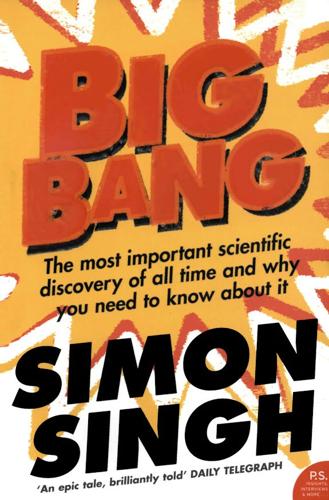
Big Bang
by
Simon Singh
Published 1 Jan 2004
Anybody who wants to understand this wonderful achievement will not do better than start with Singh’s book’ Mail on Sunday ‘An excellent introduction to the way modern science works’ The Times Higher Education Supplement By the same author Fermat’s Last Theorem The Code Book Copyright Harper Perennial An imprint of HarperCollinsPublishers 77-85 Fulham Palace Road Hammersmith London W6 8JB www.harperperennial.co.uk This edition published by Harper Perennial 2005 FIRST EDITION First published by Fourth Estate 2004 Copyright © Simon Singh 2004 Diagrams copyright © Raymond Turvey 2004 PS section copyright © Louise Tucker 2005, except ‘The Missing Pages’ by Simon Singh © Simon Singh 2005 PS™ is a trademark of HarperCollinsPublishers Ltd Simon Singh asserts the moral right to be identified as the author of this work A catalogue record for this book is available from the British Library All rights reserved under International and Pan-American Copyright Conventions.
…
In short, Patrick has been the best friend that any author could wish for. Simon Singh London June 2004 About the Author Simon Singh received his PhD in particle physics from the University of Cambridge. A former BBC producer, he directed the BAFTA award-winning documentary film Fermat’s Last Theorem and wrote the bestselling book of the same name, followed by The Code Book, also a bestseller, which was the basis for the Channel 4 series, The Science of Secrecy. For automatic updates on Simon Singh visit harperperennial.co.uk and register for AuthorTracker. Visit www.AuthorTracker.com for exclusive information on your favorite HarperCollins author.
…
And many of these interests still relate to communicating science and mathematics, so to a large extent my answer to the previous question still holds true. TOP TEN Simon Singh’s Top Ten Favourite Books: Surely You’re Joking, Mr Feynman! Richard Feynman The Making of the Atomic Bomb Richard Rhodes Chaos James Gleick Flatland Edwin A. Abbott A Mathematician’s Apology G.H. Hardy Our Final Century Martin Rees The Surgeon of Crowthorne Simon Winchester Dr Tatiana’s Sex Advice to All Creation Olivia Judson Interpreter of Maladies Jhumpa Lahiri The Phantom Tollbooth Norton Juster LIFE at a Glance Simon Singh was born in Somerset in 1964. He studied physics at Imperial College, London, and then completed his PhD in particle physics at Cambridge University and CERN, Geneva.
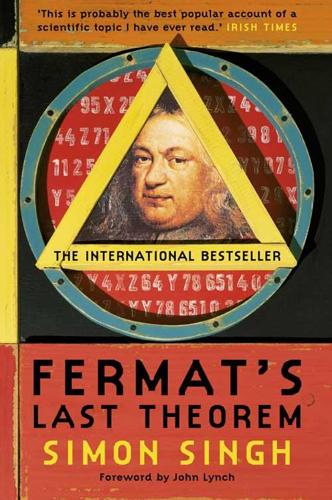
Fermat’s Last Theorem
by
Simon Singh
Published 1 Jan 1997
Also by the Author The Code Book Big Bang Copyright Fourth Estate An imprint of HarperCollinsPublishers 77–85 Fulham Palace Road Hammersmith London W6 8JB www.harpercollins.co.uk First published in paperback by Fourth Estate in 2002 (reprinted 4 times) First published in Great Britain in 1997 by Fourth Estate Copyright © 1997 by Simon Singh Foreword copyright © 1997 by John Lynch Line illustrations by Jed Mugford The right of Simon Singh to be identified as the author of this work has been asserted by him in accordance with the Copyright, Designs and Patents Act 1988. A catalogue record for this book is available from the British Library. All rights reserved under International and Pan-American Copyright Conventions.
…
SIMON SINGH Fermat’s Last Theorem THE STORY OF A RIDDLE THAT CONFOUNDED THE WORLD’S GREATEST MINDS FOR 358 YEARS In memory of Pakhar Singh Birring CONTENTS Cover Title Page Dedication Foreword Preface 1 ‘I Think I’ll Stop Here’ 2 The Riddler 3 A Mathematical Disgrace 4 Into Abstraction 5 Proof by Contradiction 6 The Secret Calculation 7 A Slight Problem Epilogue Grand Unified Mathematics Appendices Suggestions for Further Reading Index About the Author Also by the Author Copyright About the Publisher Foreword We finally met across a room, not crowded, but large enough to hold the entire Mathematics Department at Princeton on their occasions of great celebration.
…
History was littered with false claims, and much as I wished that he would be the exception, it was hard to imagine Andrew as anything but another headstone in that mathematical graveyard. A year later I received the call. After an extraordinary mathematical twist, and a flash of true insight and inspiration, Andrew had finally brought an end to Fermat in his professional life. A year after that, we found the time for him to devote to filming. By this time I had invited Simon Singh to join me in making the film, and together we spent time with Andrew, learning from the man himself the full story of those seven years of isolated study, and his year of hell that followed. As we filmed, Andrew told us, as he had told no one before, of his innermost feelings about what he had done; how for thirty years he had hung on to a childhood dream; how so much of the maths he had ever studied had been, without his really knowing it at the time, really a gathering of tools for the Fermat challenge that had dominated his career; how nothing would ever be the same; of his sense of loss for the problem that would no longer be his constant companion; and of the uplifting sense of release that he now felt.
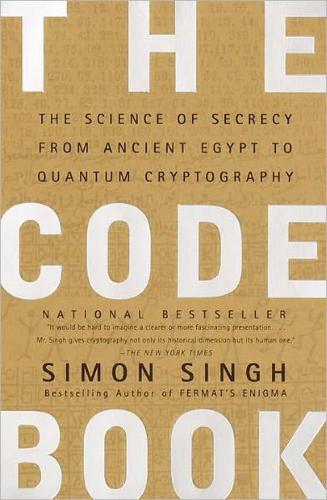
The Code Book: The Science of Secrecy From Ancient Egypt to Quantum Cryptography
by
Simon Singh
Published 1 Jan 1999
.… This intelligent, exciting book takes its drive from a simple premise-that nothing is as exciting as a secret.” —Scotland on Sunday SIMON SINGH The Code Book Simon Singh received his Ph.D. in physics from Cambridge University. A former BBC producer, he directed an award-winning documentary film on Fermat’s Last Theorem that aired on PBS’s Nova series and wrote the bestselling book, Fermat’s Enigma. He lives in London, England. Also by Simon Singh Fermat’s Enigma FIRST ANCHOR BOOKS EDITION, SEPTEMBER 2000 Copyright © 1999 by Simon Singh All rights reserved under International and Pan-American Copyright Conventions. Published in the United States by Anchor Books, a division of Random House, Inc., New York, and simultaneously in Canada by Random House of Canada Limited, Toronto.
…
PRAISE FOR SIMON SINGH AND The Code Book “Singh spins tales of cryptic intrigue in every chapter.” —The Wall Street Journal “Brings together … the geniuses who have secured communications, saved lives, and influenced the fate of nations. A pleasure to read.” —Chicago Tribune “Singh pursues the fascinating story [of codes] through the centuries, always providing plenty of detailed examples of ciphers for those who appreciate the intricacies of the medium.” —Los Angeles Times “Especially effective at putting the reader in the codebreaker’s shoes, facing each new, apparently unbreakable code.… Singh does a fine job.”
…
—San Francisco Chronicle “Singh is an interesting mix of scientist and storyteller, and this subject is the perfect mix of true fact and tall tales.” —The San Diego Union-Tribune “Where would we Information Age ignoramuses be without smart guys like Stephen Jay Gould, the late Carl Sagan, or Simon Singh? They are the troubadours of our time, making complicated subjects understandable and entertaining.” —The Plain Dealer “In this entertaining survey, the evolution of cryptography is driven by the ongoing struggle between code-makers and codebreakers.” —The New Yorker “[Singh] is well-equipped to describe all the arcane mathematics in layman’s language.”
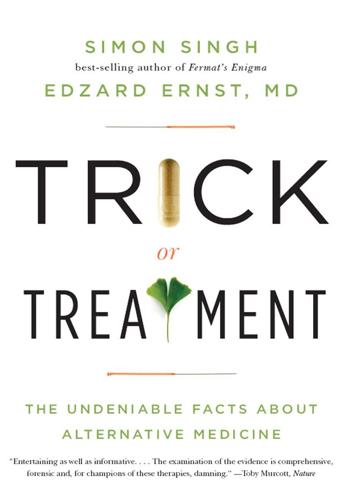
Trick or Treatment: The Undeniable Facts About Alternative Medicine
by
Edzard Ernst
and
Simon Singh
Published 17 Aug 2008
Trick or Treatment Trick or Treatment The Undeniable Facts About Alternative Medicine Simon Singh & Edzard Ernst, MD W. W. NORTON & COMPANY New York • London Copyright © 2008 by Simon Singh and Edzard Ernst First published in Great Britain in 2008 by Bantam Press, an imprint of Transworld Publishers, under the title Trick or Treatment? Alternative Medicine on Trial All rights reserved For information about permission to reproduce selections from this book, write to Permissions, W. W. Norton & Company, Inc., 500 Fifth Avenue, New York, NY 10110 Production manager: Anna Oler Library of Congress Cataloging-in-Publication Data Singh, Simon.
…
Norton & Company, Inc., 500 Fifth Avenue, New York, NY 10110 Production manager: Anna Oler Library of Congress Cataloging-in-Publication Data Singh, Simon. Trick or treatment: the undeniable facts about alternative medicine/ Simon Singh & Edzard Ernst.—1st American ed. p. cm. Includes bibliographical references. ISBN: 978-0-393-06986-0 1. Alternative medicine. I. Ernst, E. (Edzard) II. Title. [DNLM: 1. Complementary Therapies. 2. Evidence-Based Medicine. 3. Placebo Effect. WB 890 S617t 2008] R&33.S568 2008 610—dc22 2008019110 W. W. Norton & Company, Inc. 500 Fifth Avenue, New York, N.Y. 10110 www.wwnorton.com W. W. Norton & Company Ltd. Castle House, 75/76 Wells Street, London W1T 3QT 2 3 4 5 6 7 8 9 0 Dedicated to HRH The Prince of Wales Contents Introduction 1 How Do You Determine the Truth?
…
One of us, Edzard Ernst, is an insider who practised medicine for many years, including some alternative therapies. He is the world’s first professor of alternative medicine, and his research group has spent fifteen years trying to work out which treatments work and which do not. The other of us, Simon Singh, is an outsider who has spent almost two decades as a science journalist, working in print, television and radio, always striving to explain complicated ideas in a way that the general public can grasp. Together we think that we can get closer to the truth than anybody else and, equally importantly, we will endeavour to explain it to you in a clear, vivid and comprehensible manner.
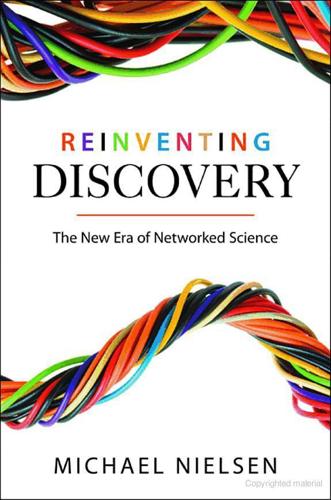
Reinventing Discovery: The New Era of Networked Science
by
Michael Nielsen
Published 2 Oct 2011
And that will bring astonishing benefits, benefits far too great to refuse merely to preserve a few successful businesses. As occurs so often with the introduction of new technologies, we are weighing a great good for society against harm for a few. The traditional publishers who are battling against open access should have our sympathy, but not our support. Science Blogging In April of 2008, author Simon Singh wrote a piece in the Guardian newspaper, where he criticized the British Chiropractic Association (BCA) for claiming “that their members can help treat children with colic, sleeping and feeding problems, frequent ear infections, asthma and prolonged crying, even though there is not a jot of evidence.
…
p 164: The American Chemical Society’s revenue and profit figures are from [131]. p 164: My account of Eric Dezenhall and the publishers’ trade association (the Association of American Publishers) is based on [70], with additional background from [100]. The quotes from PRISM are from [176]. p 165: Simon Singh’s original article in which he criticized the British Chiropractic Association (BCA) is [199]. The article by Dougans and Green on the Singh case is at [56]. My discussion also benefited from articles by Ben Goldacre [74] and Martin Robbins [185]. The BCA’s description of evidence for the effectiveness of chiropractic treatments is [221].
…
p 180: Although the user-contributed comment sites for science are failing, scientists aren’t always unwilling to comment online about other scientists’ work. We saw an example along these lines starting on page 259, with science bloggers investigating the evidence for chiropractic offered by the British Chiropractic Association in their dispute with Simon Singh. Other examples include (1) a Polymath-style collaboration [173] in 2010, in which a group of mathematicians, computer scientists, and physicists worked together online to analyze a claimed solution to one of the biggest open problems in computer science; (2) a blog-based online discussion [180] analyzing NASA’s 2010 announcement [242] that they’d discovered lifeforms that incorporate arsenic; (3) Faculty of 1000 (http://f1000.com/), a site that actively recruits a limited number of high-profile researchers to write reviews of biomedical papers; and (4) MathSciNet (http://www.ams.org/mathscinet/), a similar site for mathematics.
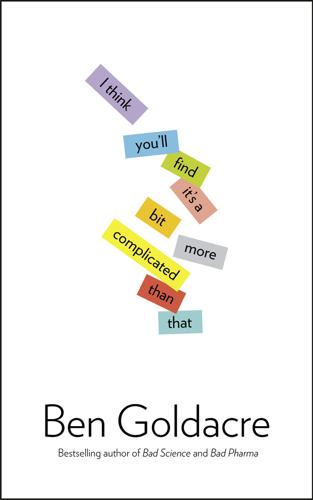
I Think You'll Find It's a Bit More Complicated Than That
by
Ben Goldacre
Published 22 Oct 2014
I’m not convinced that a libel law which allows a company like NMT to do this to one man is in society’s best interests. ‘We Are More Possible Than You Can Powerfully Imagine’ Guardian, 29 July 2009 Today the Australian magazine Cosmos, along with a vast number of other blogs and publications, reprinted an article by Simon Singh, in slightly tweaked form, as an act of solidarity. The British Chiropractic Association has been suing Singh personally for the past fifteen months, over a piece in the Guardian in which he criticised the BCA for claiming that its members could treat children for colic, ear infections, asthma, prolonged crying, and sleeping and feeding conditions, by manipulating their spines.
…
IID=4148066&GKP=202513 restricted by GMC: http://webcache.gmc-uk.org/minutesfiles/2063.html fallen from $20: http://www.nasdaq.com/aspx/dynamic_charting.aspx?selected=NMTI&symbol=NMTI ‘We Are More Possible Than You Can Powerfully Imagine’ Guardian: http://www.guardian.co.uk/commentisfree/libertycentral/2009/jul/29/simon-singh-science-chiropractic-litigation intending to do good: http://ebn.bmj.com/cgi/content/full/10/1/4 British Medical Journal: http://www.google.co.uk/url?sa=t&source= web&ct=res&cd=1&url=http%3A%2F%2Fwww.bmj.com%2F&ei=VURwSp3tMMahjAfo282hBQ&usg=AFQjCNFrgA5ACj4Qwf7dYRivBOSsYx2Hrg&sig2=2-JerEf-4W8otKp9mO4J7A The Times: http://www.timesonline.co.uk/tol/news/article6426195.ece Daily Mail: http://www.dailymail.co.uk/debate/article-1196696/Back-cures-brave-scientist-epic-court-battle-How-Britains-libel-laws-threatening-free-speech.html Daily Telegraph: http://www.telegraph.co.uk/science/science-news/5442522/Stephen-Fry-and-Ricky-Gervais-defend-science-writer-sued-for-libel.html Independent: http://www.independent.co.uk/life-style/health-and-families/features/jeremy-laurance-the-libel-laws-that-threaten-to-stifle-scientific-debate-1744810.html Nature: http://www.nature.com/nature/journal/v459/n7248/full/459751a.html Economist: http://www.economist.com/displaystory.cfm?
…
sectioncode=26&storycode=406872&c=1 Sunday Times: http://www.timesonline.co.uk/tol/comment/article6493564.ece Channel 4: http://www.channel4.com/news/articles/uk/ouch+dr+singh+hits+back/3194057 Wall Street Journal: http://online.wsj.com/article/SB124406714025182743.html Observer: http://www.guardian.co.uk/commentisfree/2009/may/31/simon-singh-science British Medical Journal: http://www.bmj.com/cgi/content/full/339/jul08_4/b2783 international petition: http://www.senseaboutscience.org.uk/index.php/site/project/333 Professor David Colquhorn: http://www.dcscience.net/?p=1775 BCA selectively quoting: http://layscience.net/node/598 Every stone was turned: http://www.layscience.net/node/598 Quackometer: http://www.quackometer.net/ APGaylard: http://apgaylard.wordpress.com/2009/06/18/plethora-or-paucity-the-bca-and-bedwetting/ Gimplyblog: http://gimpyblog.wordpress.com/2009/06/18/the-bca-have-no-evidence-that-chiropractic-can-help-with-ear-infections/ EvidenceMatters: http://evidencematters.org/2009/06/18/british-chiropractic-association-and-the-plethora-of-evidence-for-paediatric-asthma/ Dr Petra Boynton: http://www.drpetra.co.uk/blog/?
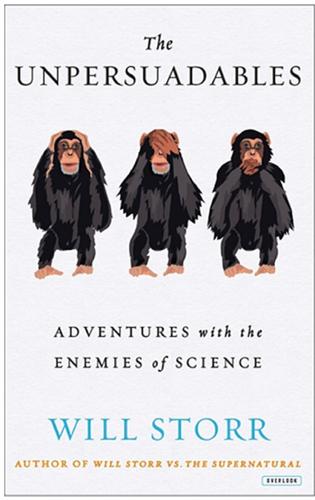
The Unpersuadables: Adventures With the Enemies of Science
by
Will Storr
Published 1 Jan 2013
Lin, Lee Ross, ‘The Bias Blind Spot: Perceptions of Bias in Self Versus Others’, Personal and Social Psychology Bulletin, March 2002. 7: ‘Quack’ page 94 four million pounds a year: ‘NHS money “wasted” on homeopathy’, BBC News, 22 February 2010. 94 billions in … the US: ‘The Use of Complementary and Alternative Medicine in the United States’, National Center for Complementary and Alternative Medicine, December 2008. 94 Over fifteen thousand NHS prescriptions: Martin Beckford, ‘NHS spending on homeopathy prescriptions falls to £122,000’, Daily Telegraph, 30 August 2011. 94 score above 70 per cent: ‘NHS money “wasted”’ on homeopathy’, BBC News, 22 February 2010. 94 Questions have been asked in Parliament: http://www.publications.parliament.uk/pa/cm201011/cmhansrd/cm100629/debtext/100629-0003.htm. 94 the House of Commons Science and Technology Committee recommended: ‘NHS money “wasted” on homeopathy’, BBC News, 22 February 2010. 94 Even ex-Prime Minister Tony Blair has become involved: ‘Blair downplays creationism fears’, BBC News, 2 November 2006. 94 an eightfold drop in NHS prescriptions: Martin Beckford, ‘NHS spending on homeopathy prescriptions falls to £122,000’, Daily Telegraph, 30 August 2011. 94–95 just 0.001 per cent of the NHS’s annual drug budget: Martin Beckford, ‘NHS spending on homeopathy prescriptions falls to £122,000’, Daily Telegraph, 30 August 2011. 96 which began in 1790: (The birth of homeopathy is sometimes placed at 1792, but 1790 apparently represents the start of Hahnemann’s experiments.) Simon Singh and Edzard Ernst, Trick or Treatment, Corgi, 2008, p. 119. 97 one molecule … in your pill is one in a billion billion billion billion: Simon Singh and Edzard Ernst, Trick or Treatment, Corgi, 2008, p. 124. 97 a sphere of water that stretches from the earth to the sun: Ben Goldacre, Bad Science, 4th Estate, 2008, p. 33. 99 It is said that Vithoulkas dodged his judgement day: ‘George Vithoulkas Makes a Fool of Himself’, The Quackometer, 24 February 2010. 99 typically merciless statement that was published on Randi’s personal blog: James Randi, ‘A Correction’, Swift blog, 30 December 2008. 102 Written by Dr Michael Shermer: Michael Shermer, Why People Believe Weird Things, Souvenir Press, 2007, pp. 309–331. 107 The American rationalist-celebrity Rebecca Watson: Rebecca Watson interview, YouTube, uploaded 7 July 2008. 107 This is why James Randi frequently rejects the title ‘debunker’: ‘The $18,000 question’, Straits Times, 30 May 1991. 108 the man Professor Chris French calls ‘the patron saint of the Skeptics’: Interview, Chris French and James Randi, YouTube, April 2008, on behalf of The Skeptic magazine. 109 Randi himself has said that ‘any definitive tests … have been negative’: Interview [AP] St.
…
Davenas et al., ‘Human basophil degranulation triggered by very dilute antiserum against IgE’, Nature 333, June 1988. 110 Benveniste was initially sceptical of homeopathy: Heretics of Science, episode one, BBC2, 1994. 110 his best researcher, Dr Elisabeth Davenas: Heretics of Science, episode one, BBC2, 1994. 110 the results were reportedly replicated by four laboratories: Maddox, Stewart, Randi, ‘“High-dilution” experiments a delusion’, Nature, 28 July 1988. (Description of Nature replication that follows is sourced from the BBC documentary, the Nature articles and Trick or Treatment, by Simon Singh and Edzard Ernst). 110 Dr Elisabeth Davenas – a homeopathy proponent: Simon Singh and Edzard Ernst, Trick or Treatment, Corgi, 2008, p. 151. 111 When the result was revealed, some of Benveniste’s scientists wept: Heretics of Science, episode one, BBC2, 1994. 111 Their report was published in Nature in July 1988: Maddox, Stewart, Randi, ‘“High-dilution” experiments a delusion’, Nature, 28 July 1988. 111 Benveniste fought back: ‘Dr Jacques Benveniste replies’, Nature, 28 July 1988. 111 He described the investigation as a ‘pantomime’: Heretics of Science, episode one, BBC2, 1994. 111 Benveniste finished his grand defence: ‘Dr Jacques Benveniste replies’, Nature, 28 July 1988. 112 Two years later, he was fired: Heretics of Science, episode one, BBC2, 1994. 112 ‘Shang et al.’: Aijing Shang et al., ‘Are the clinical effects of homoeopathy placebo effects?
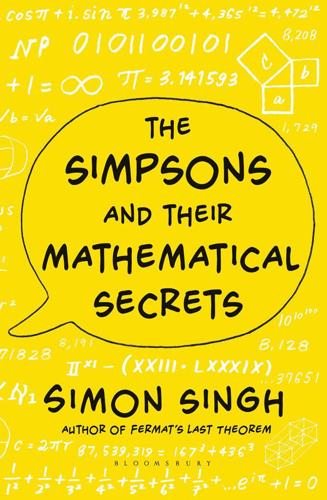
The Simpsons and Their Mathematical Secrets
by
Simon Singh
Published 29 Oct 2013
Wash Bucket is a robotic mop bucket who has appeared in four episodes. 26. Emperor Nikolai is the robot emperor of Robo-Hungary. 27. The Wronskian is used in the study of differential equations and is named after the nineteenth-century French-Polish mathematician Józef Maria Hoene-Wroński. Note on the Author SIMON SINGH received his PhD in particle physics from the University of Cambridge. A former BBC producer, he directed a BAFTA Award–winning documentary about Fermat’s last theorem and wrote a bestselling book on the same subject. His best seller The Code Book was the basis for the Channel Four series The Science of Secrecy.
…
BY THE SAME AUTHOR Fermat’s Enigma: The Epic Quest to Solve the World’s Greatest Mathematical Problem (US edition) Fermat’s Last Theorem: The Story of a Riddle that Confounded the World’s Greatest Minds for 358 Years (UK edition) The Code Book: The Science of Secrecy from Ancient Egypt to Quantum Cryptography Big Bang: The Origin of the Universe Trick or Treatment: The Undeniable Facts about Alternative Medicine First published in Great Britain 2013 This electronic edition published in 2013 by Bloomsbury Publishing Plc Copyright © 2013 by Simon Singh The moral right of the author has been asserted All rights reserved You may not copy, distribute, transmit, reproduce or otherwise make available this publication (or any part of it) in any form, or by any means (including without limitation electronic, digital, optical, mechanical, photocopying, printing, recording or otherwise), without the prior written permission of the publisher.
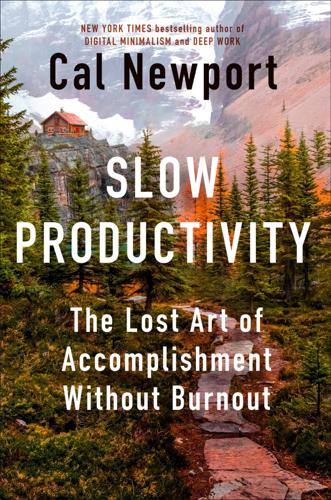
Slow Productivity: The Lost Art of Accomplishment Without Burnout
by
Cal Newport
Published 5 Mar 2024
Proposition: Limit the Big In seeking inspiration for how to implement the first principle of slow productivity—to do fewer things—it makes sense to start with a famous example of professional simplification: mathematician Andrew Wiles’s pursuit of Fermat’s last theorem, a deceptively simple number theory problem first identified in the seventeenth century by the French polymath Pierre de Fermat that had resisted solutions for centuries.[*] As detailed in science writer Simon Singh’s impressively researched book, Fermat’s Enigma, the story of this theorem’s eventual solution begins in dramatic fashion. The scene opens on a library in the 1960s. A ten-year-old Andrew Wiles comes across a book that introduces him to the theorem. He’s entranced. “Here was a problem that I, a ten-year-old, could understand,” he told Singh.
…
GO TO NOTE REFERENCE IN TEXT “and decisions start to drag”: Cal Newport, “Why Remote Work Is So Hard—and How It Can Be Fixed,” New Yorker, May 26, 2020, newyorker.com/culture/annals-of-inquiry/can-remote-work-be-fixed. GO TO NOTE REFERENCE IN TEXT “Here was a problem”: Simon Singh, Fermat’s Enigma: The Epic Quest to Solve the World’s Greatest Mathematical Problem (New York: Anchor Books, 1997), 6. GO TO NOTE REFERENCE IN TEXT “I was electrified”: Singh, Fermat’s Enigma, 205. GO TO NOTE REFERENCE IN TEXT “Wiles abandoned any work”: Singh, Fermat’s Enigma, 207.

Whiplash: How to Survive Our Faster Future
by
Joi Ito
and
Jeff Howe
Published 6 Dec 2016
“Prisoner’s Dilemma,” Stanford Encyclopedia of Philosophy, revised August 29, 2014, http://plato.stanford.edu/entries/prisoner-dilemma/. 20 Austin Hill, “On Your Permanent Record: Anonymity, Pseudonymity, Ephemerality & Bears Omfg!,” Medium, March 17, 2014, https://medium.com/@austinhill/on-your-permanent-record-f5ab81f9f654#.ak8ith7gu. 21 Felix Martin, Money: The Unauthorized Biography (New York: Knopf Doubleday Publishing Group, 2015). 22 Ibid., 43. 23 Ibid., 55–60. 24 Simon Singh, The Code Book: The Science of Secrecy from Ancient Egypt to Quantum Cryptography (New York: Knopf Doubleday Publishing Group, 2011). Kindle Edition, chapter 1: “The Cipher of Mary, Queen of Scots.” 25 Ibid. 26 Pierre Berloquin, Hidden Codes & Grand Designs: Secret Languages from Ancient Times to Modern Day (New York: Sterling Publishing Company, Inc., 2008). 27 Singh, The Code Book. 28 Ibid. 29 Singh, The Code Book, chapter 2: “Le Chiffre Indéchiffrable”; Richard A.
…
Nicole Eagan, “What the Human Body Teaches Us about Cyber Security,” World Economic Forum, August 20, 2015, https://www.weforum.org/agenda/2015/08/good-immune-system-wards-off-cyber-threats/; Shelly Fan, “How Artificial Immune Systems May Be the Future of Cybersecurity,” Singularity HUB, December 27, 2015, http://singularityhub.com/2015/12/27/cyberimmunity-ai-based-artificial-immune-systems-may-be-cybersecurity-of-the-future/; “Workshop on Bio-Inspired Security, Trust, Assurance and Resilience (BioSTAR 2016)” (37th IEEE Symposium on Security and Privacy, IEEE S&P 2016 Workshop), San Jose, CA, May 26, 2016), http://biostar.cybersecurity.bio/. 7 In The Code Book, Simon Singh gives an example in which Alice and Bob each start with a bucket of yellow paint. Alice adds a liter of purple to hers, Bob adds a liter of red, and then they swap buckets. Alice now adds another liter of purple to Bob’s bucket, while Bob adds a liter of red to Alice’s. Now Bob and Alice each have an identical bucket of murky brown paint, but Eve (the eavesdropper) won’t be able to reproduce the color, even if she has access to the pigments they used.
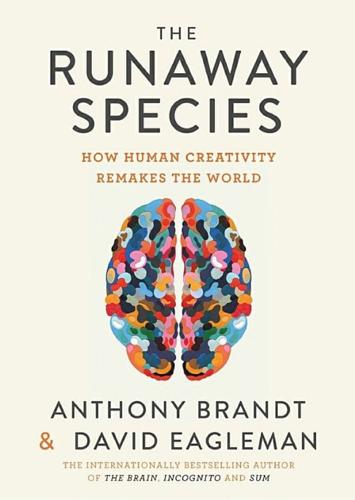
The Runaway Species: How Human Creativity Remakes the World
by
David Eagleman
and
Anthony Brandt
Published 30 Sep 2017
Hall, Michelangelo’s Last Judgment. 7 Richard Steinitz, György Ligeti: Music of the Imagination (Boston: Northeastern University Press, 2003). 8 T.J. Pinch and Karin Bijsterveld, The Oxford Handbook of Sound Studies (New York: Oxford University Press, 2012). 9 NOVA, “Andrew Wiles on Solving Fermat,” PBS, November 1, 2000, accessed May 11, 2016, <http://www.pbs.org/wgbh/nova/physics/andrew-wiles-fermat.html> 10 Simon Singh, Fermat’s Enigma: The Epic Quest to Solve the World’s Greatest Mathematical Problem (New York: Walker, 1997). 11 Michael J. Gelb, How to Think like Leonardo Da Vinci (New York: Dell, 2000). 12 Dean Keith Simonton, “Creative Productivity: A Predictive and Explanatory Model of Career Trajectories and Landmarks,” Psychological Review 104 no. 1 (1997): p. 66–89, <http://dx.doi.org/10.1037/0033-295X.104.1.66> 13 Yasuyuki Kowatari et al., “Neural Networks Involved in Artistic Creativity,” Human Brain Mapping 30 no. 5 (2009): pp. 1678-90, <http://dx.doi.org/10.1002/hbm.20633> 14 Suzan-Lori Parks, 365 Days/365 Plays (New York: Theater Communications Group, Inc., 2006). 11.
…
Hall, Michelangelo’s Last Judgment. 7 Richard Steinitz, György Ligeti: Music of the Imagination (Boston: Northeastern University Press, 2003). 8 T.J. Pinch and Karin Bijsterveld, The Oxford Handbook of Sound Studies (New York: Oxford University Press, 2012). 9 NOVA, “Andrew Wiles on Solving Fermat,” PBS, November 1, 2000, accessed May 11, 2016, <http://www.pbs.org/wgbh/nova/physics/andrew-wiles-fermat.html> 10 Simon Singh, Fermat’s Enigma: The Epic Quest to Solve the World’s Greatest Mathematical Problem (New York: Walker, 1997). 11 Michael J. Gelb, How to Think like Leonardo Da Vinci (New York: Dell, 2000). 12 Dean Keith Simonton, “Creative Productivity: A Predictive and Explanatory Model of Career Trajectories and Landmarks,” Psychological Review 104 no. 1 (1997): p. 66–89, <http://dx.doi.org/10.1037/0033-295X.104.1.66> 13 Yasuyuki Kowatari et al., “Neural Networks Involved in Artistic Creativity,” Human Brain Mapping 30 no. 5 (2009): pp. 1678-90, <http://dx.doi.org/10.1002/hbm.20633> 14 Suzan-Lori Parks, 365 Days/365 Plays (New York: Theater Communications Group, Inc., 2006). 11.
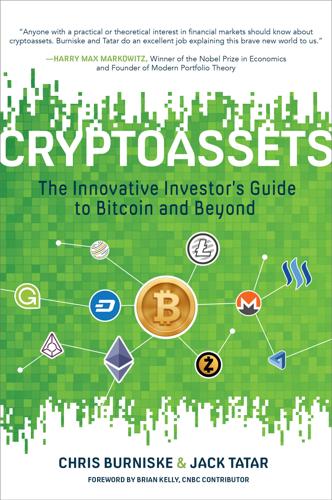
Cryptoassets: The Innovative Investor's Guide to Bitcoin and Beyond: The Innovative Investor's Guide to Bitcoin and Beyond
by
Chris Burniske
and
Jack Tatar
Published 19 Oct 2017
We will go deeper into the specifics of the process in the proof-of-work section that follows, but for now here’s the takeaway: cryptography allows the computers building Bitcoin’s blockchain to collaborate in an automated system of mathematical trust. There is no subjectivity as to whether a transaction is confirmed in Bitcoin’s blockchain: it’s just math. For a deep dive on cryptography, we highly recommend The Code Book: The Science of Secrecy from Ancient Egypt to Quantum Cryptography by Simon Singh. Immutable The combination of globally distributed computers that can cryptographically verify transactions and the building of Bitcoin’s blockchain leads to an immutable database, meaning the computers building Bitcoin’s blockchain can only do so in an append only fashion. Append only means that information can only be added to Bitcoin’s blockchain over time but cannot be deleted—an audit trail etched in digital granite.
…
xg_source=activity. 31. http://archive.is/Gvonb#selection-3137.0-3145.230. 32. http://www.nytimes.com/interactive/2009/02/04/business/20090205-bailout-totals-graphic.html?_r=0. Chapter 2 1. https://papers.ssrn.com/sol3/papers.cfm?abstract_id=2808762. 2. https://99bitcoins.com/bitcoinobituaries/. 3. Simon Singh, The Code Book (Anchor, 2000). 4. This quote (or maxim) is often credited to the great Mark Twain, but as with many great quotes the actual author of it is unclear. See http://quoteinvestigator.com/2014/01/12/history-rhymes/. 5. https://www.bloomberg.com/view/articles/2016-09-01/maybe-blockchain-really-does-have-magical-powers. 6. https://www.cbinsights.com/blog/industries-disrupted-blockchain/. 7. http://www.washington.edu/news/2015/09/17/a-q-a-with-pedro-domingos-author-of-the-master-algorithm/.
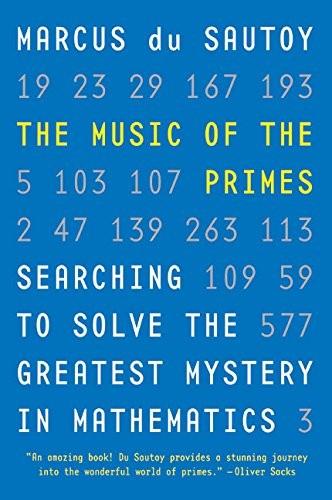
The Music of the Primes
by
Marcus Du Sautoy
Published 26 Apr 2004
http://www.musicoftheprimes.com/ The website for this book contains a regularly updated news section and a huge amount of fascinating information related to prime numbers. BOOKSHOP Now you can buy any of these great paperbacks from Harper Perennial at 10% off recommended retail price. FREE postage and packing in the UK. Fermat’s Last Theorem Simon Singh 1 84115 791 0 £8.99 The Code Book Simon Singh 1 85702 889 9 £9.99 Longitude Dava Sobel 1 85702 5717 £6.99 Isaac Newton James GleickO 00 716318 5 £7.99 Nature via Nurture Matt Ridley 1 84115 746 5 £8.99 The Curious Life of Robert Hooke Lisajardine0007151756 £8.99 Total cost———— 10% discount———— Final total———— To purchase by Visa/Mastercard/Switch simply call08707871724orfaxon08707871725 To pay by cheque, send a copy of this form with a cheque made payable to ‘HarperCollins Publishers’ to: Mail Order Dept (Ref: BOM), HarperCollins Publishers, Westerhill Road, Bishopbriggs, G64 2QT, making sure to include your full name, postal address and phone number.

Obliquity: Why Our Goals Are Best Achieved Indirectly
by
John Kay
Published 30 Apr 2010
Chapter 6: The Ubiquity of Obliquity—How Obliquity Is Relevant to Many Aspects of Our Lives 1 Giorgio Vasari, Lives of the Painters, Sculptors, and Architects (London, George Bell & Sons, 1878), vol. I, p. 431. 2 Ernst H. Gombrich, The Story of Art (Oxford, Phaidon Press, 1978), p. 8. 3 Pablo Picasso to Marius de Zaya in Arts, May 1923, reproduced in Alfred H. Barr, Picasso: Fifty Years of His Art (New York, Museum of Modern Art, 1946), p. 270. 4 Simon Singh, Fermat’s Last Theorem (London, Fourth Estate, 1997). 5 U.S. National Park Service, “The Yellowstone Fires of 1988,” 2008. 6 B. M. Kilgore, “Origin and History of Wildland Fire Use in the U.S. National Park System,” George Wright Forum 24, no. 3 (2007). 7 Le Corbusier, The Radiant City (London, Faber & Faber, 1964), p.154. 8 Robert A.
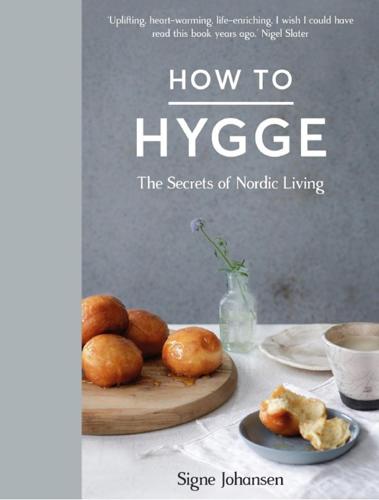
How to Hygge: The Secrets of Nordic Living
by
Signe Johansen
Published 19 Oct 2016
General Reading ∞ Diane Ackerman, A Natural History of the Senses (Vintage Books, 1992) ∞ Michael Booth, The Almost Nearly Perfect People: Behind the Myth of the Scandinavian Utopia (Vintage Books, 2015) ∞ Charlotte and Peter Fiell, Scandinavian Design (Taschen GmbH, 2013) ∞ Tristan Gooley, The Natural Navigator (Virgin Books, 2014) ∞ Yuval Noah Harari, Sapiens: A Brief History of Humankind (Vintage Books, 2015) ∞ Alexandra Heminsley, Running Like a Girl (Windmill Books, 2014) ∞ Anna Kessel, Eat Sweat Play (Macmillan, 2016) ∞ Zach Klein and Steven Leckart, Cabin Porn (Particular Books, 2015) ∞ Aldo Leopold, A Sand County Almanac (OUP, USA, 1968) ∞ Robert Macfarlane, The Old Ways: A Journey on Foot (Penguin Books, 2013) ∞ Marcel Mauss, The Gift (Martino Fine Books, 2011) ∞ Lars Mytting, Norwegian Wood: Chopping, Stacking and Drying Wood the Scandinavian Way (MacLehose Press, 2015) ∞ Robert Penn, The Man Who Made Things Out of Trees (Penguin Books, 2016) ∞ Michael Pye, The Edge of the World: How the North Sea Made Us Who We Are (Penguin Books, 2015) ∞ Richard Sennett, Together (Penguin Books, 2013) and The Craftsman (Penguin Books, 2009) ∞ Simon Singh, Fermat’s Last Theorem (Fourth Estate, 2002) ∞ Henry David Thoreau, Walden; or, Life in the Woods (Princeton University Press, 2016) ∞ Elizabeth Wilhide, Scandinavian Modern Home (Quadrille Publishing, 2008) ∞ Damon Young, How to Think about Exercise (Macmillan, 2014) ∞ Theodore Zeldin, An Intimate History of Humanity (Vintage Books, 1995) Food & Cookery Books ∞ Darina Allen, Forgotten Skills of Cooking (Kyle Cathie, 2009) ∞ Laurie Colwin, Home Cooking (Fig Tree, 2012) ∞ Alan Davidson, North Atlantic Seafood (Prospect Books, 2012) ∞ Olafur Eliasson, Studio Olafur Eliasson: The Kitchen (Phaidon Press, 2016) ∞ Adam Gopnik, The Table Comes First (Vintage Books, 2012) ∞ Sandor Ellix Katz, The Art of Fermentation (Chelsea Green Publishing Co, 2012) ∞ Mark Kurlansky, Cod (Vintage Books, 1999) ∞ Richard Mabey, Food for Free (Collins, 2012) ∞ Harold McGee, McGee on Food & Cooking (Hodder & Stoughton, 2004) ∞ Bee Wilson, First Bite (Fourth Estate, 2015) The books by Diana Henry, Fiona Beckett, Claudia Roden, Nigella Lawson, Richard Bertinet, Tim Hayward, Nigel Slater, Alice Waters, The Barefoot Contessa, Yotam Ottolenghi, Nick Barnard of Rude Health and the Cook’s Illustrated series of cookbooks have all proven invaluable.
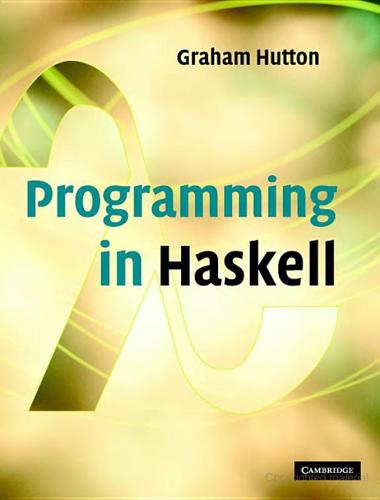
Programming in Haskell
by
Graham Hutton
Published 5 Feb 2007
Implementing Functional Languages: A Tutorial. Prentice Hall, 1992. 27. V.J. Rayward-Smith. A First Course in Formal Language Theory, vol. 234 of Pitman Research Notes in Math. Blackwell Scientific Publications, 1983. 28. John C. Reynolds. Theories of Programming Languages. Cambridge University Press, 1998. 29. Simon Singh. The Code Book: The Secret History of Codes and Code Breaking. Fourth Estate, 1999. 30. Philip Wadler. The Concatenate Vanishes. University of Glasgow, 1989. 31. Philip Wadler. Monads for Functional Programming. In Manfred Broy, ed., Proceedings of the Marktoberdorf Summer School on Program Design Calculi.
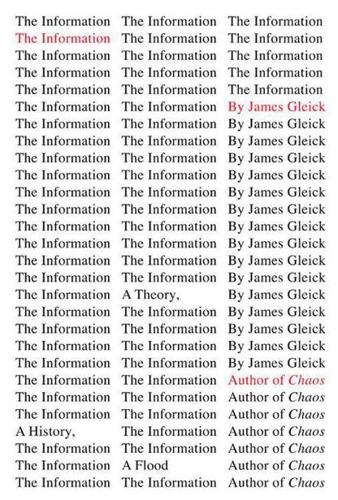
The Information: A History, a Theory, a Flood
by
James Gleick
Published 1 Mar 2011
♦ A “KEY-ALPHABET” AND A “MESSAGE-ALPHABET”: Lewis Carroll, “The Telegraph-Cipher,” printed card 8 x 12 cm., Berol Collection, New York University Library. ♦ “ONE OF THE MOST SINGULAR CHARACTERISTICS”: Charles Babbage, Passages from the Life of a Philosopher (London: Longman, Green, Longman, Roberts, & Green, 1864), 235. ♦ POLYALPHABETIC CIPHER KNOWN AS THE VIGENÈRE: Simon Singh, The Code Book: The Secret History of Codes and Code-breaking (London: Fourth Estate, 1999), 63 ff. ♦ “THE VARIOUS PARTS OF THE MACHINERY”: Dionysius Lardner, “Babbage’s Calculating Engines,” Edinburgh Review 59, no. 120 (1834): 315–17. ♦ “NAME OF EVERYTHING WHICH IS BOTH X AND Y”: De Morgan to Boole, 28 November 1847, in G.
…
Smolin, “The Early Days of Experimental Quantum Cryptography,” IBM Journal of Research and Development 48 (2004): 47–52. ♦ “WE SAY THINGS SUCH AS ‘ALICE SENDS BOB’ ”: Barbara M. Terhal, “Is Entanglement Monogamous?” IBM Journal of Research and Development 48, no. 1 (2004): 71–78. ♦ FOLLOWING AN INTRICATE AND COMPLEX PROTOCOL: A detailed explanation can be found in Simon Singh, The Code Book: The Secret History of Codes and Codebreaking (London: Fourth Estate, 1999); it takes ten pages of exquisite prose, beginning at 339. ♦ “STAND BY: I’LL TELEPORT YOU SOME GOULASH”: IBM advertisement, Scientific American (February 1996), 0–1; Anthony H. G. Hey, ed., Feynman and Computation, xiii; Tom Siegfried, The Bit and the Pendulum, 13
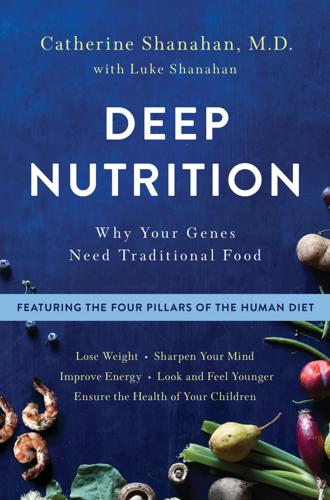
Deep Nutrition: Why Your Genes Need Traditional Food
by
Catherine Shanahan M. D.
Published 2 Jan 2017
All these instances of patterned growth are directed not by DNA but by the rules of math and physics which act on living tissue automatically to create pattern. During the course of cellular and tissue growth there comes a point where the flow of genetic information drops away and, like a lunar module floating through space, the organism’s growth is now on autopilot. As author, journalist, and TV producer Dr. Simon Singh explains: Physics and mathematics are capable of producing intricate patterns in non-organic constructions (for example, snowflakes and sand dunes). They can offer a range of patterns which will emerge spontaneously, given the correct starting conditions. The theory which is currently gaining support says that life operates by using DNA to create the right starting conditions, and thereafter physics and maths do all the rest.103 Biomathematics offers us a fundamentally new perspective of the universe and the living world.
…
Zeising, Adolf, 1854, Neue Lehre von den Proportionen des menschlichen Körpers aus einem bisher unerkannt gebliebenen, die ganze Natur und Kunst durchdringenden morphologischen Grundgesetze entwickelt und mit einer vollständigen historischen Uebersicht der bisherigen Systeme begleitet, Leipzig: Weigel. 102. Mathematical lives of plants: why plants grow in geometrically curious patterns, Julie J. Rehmeyer, July 21, 2007, www.mywire.com/pubs/ScienceNews/2007/07/21/4250760 103. Excerpted from the July 11, 1998 Sunday Telegraph, Simon Singh’s review of Ian Stewart’s book Nature’s Numbers. 104. Chaotic climate dynamics, Selvan AM, Luniver Press, 2. 105. A superstring theory for fractal spacetime, chaos and quantumlike mechanics in atmospheric flows, AM Selvan and Suvarna Fadnavis, published with modification in Chaos, Solitons, and Fractals, 10(8), pp. 1321-1334, 1999. 106.
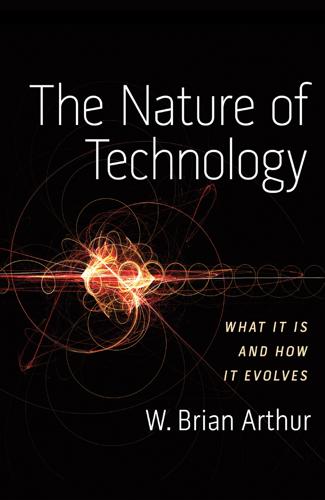
The Nature of Technology
by
W. Brian Arthur
Published 6 Aug 2009
Lane, eds., Addison-Wesley, Reading, MA, 1997. Aitken (1985, p. 547) says that “[t]o understand the process [of invention] it is essential to understand the previously separate flows of information and stocks of knowledge that came together to produce something new” 129 says mathematician Kenneth Ribet: Quoted in Simon Singh, Fermat’s Last Theorem, Fourth Estate, London, 1997, p. 304. Chapter 7: Structural Deepening 131 path of development: Economists call this a technological trajectory. See Richard Nelson and Sidney Winter, “In Search of a Useful Theory of Innovation,” Research Policy 6, 36–76, 1977; G. Dosi, “Technological Paradigms and Technological Trajectories,” Research Policy 11, 146–62, 1982; and Dosi, Innovation, Organization, and Economic Dynamics, Edward Elgar, Aldershot, UK, 2000, p. 53.
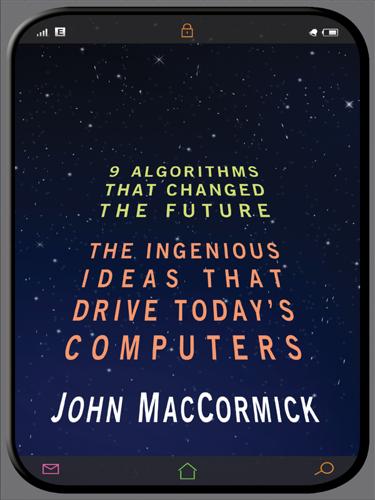
Nine Algorithms That Changed the Future: The Ingenious Ideas That Drive Today's Computers
by
John MacCormick
and
Chris Bishop
Published 27 Dec 2011
John Battelle's The Search begins with an accessible and interesting history of the web search industry, including the rise of Google. The web spam mentioned on page 36 is discussed in “Spam, Damn Spam, and Statistics: Using Statistical Analysis to Locate Spam Web Pages,” by Fetterly, Manasse, and Najork, and published in the 2004 WebDB conference. Public key cryptography (chapter 4). Simon Singh's The Code Book contains superb, accessible descriptions of many aspects of cryptography, including public key. It also recounts in detail the story of the secret discovery of public key cryptography at GCHQin Britain. Bishop's lectures (see above) contain a clever practical demonstration of the paint-mixing analogy for public key crypto.
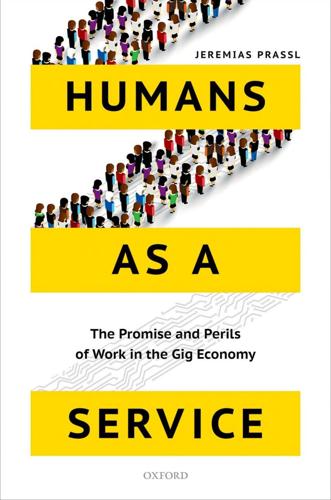
Humans as a Service: The Promise and Perils of Work in the Gig Economy
by
Jeremias Prassl
Published 7 May 2018
As we move towards a labour market in which growing numbers of workers share the challenges faced by their gig-economy colleagues, there is a real need for creative approaches to new models of worker protection. It’s a daunting task—but one we cannot afford to ignore. * * * Notes introduction 1. Tom Standage, The Mechanical Turk: The True Story of the Chess-playing Machine that Fooled the World (Allen Lane 2002). For entertaining reviews, see Simon Singh, ‘Turk’s gambit’, The Guardian (20 April 2002), http://www.theguardian.com/ books/2002/apr/20/scienceandnature.highereducation, archived at https:// perma.cc/T9XK-W7N4; Dick Teresi, ‘Turkish gambit’, The New York Times (2 June 2002), http://www.nytimes.com/2002/06/02/books/turkish-gambit.html, archived at https://perma.cc/77YA-9U5K.
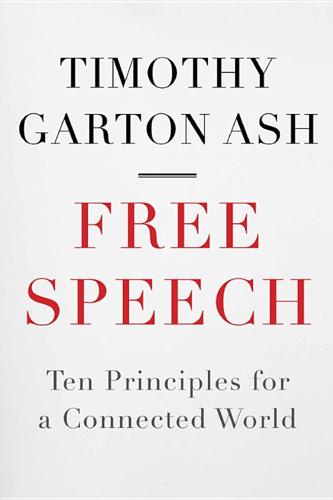
Free Speech: Ten Principles for a Connected World
by
Timothy Garton Ash
Published 23 May 2016
They were mainly based on a single research paper, using company statisticians. Out of such experiences emerged a movement, animated by the science writer Ben Goldacre, calling for all past and present clinical trials to be registered and their methods and results reported.3 Another British science writer, Simon Singh, was sued for libel by the British Chiropractic Association because he wrote that the organisation ‘happily promotes bogus treatments’ based on ‘not a jot of evidence’.4 Although Singh eventually won his case on appeal, he had to persevere through years of expensive and stressful litigation. Outrage at the chiropractors’ manipulation of Britain’s libel law contributed to its subsequent reform.
…
The figure of £424 million comes from page 6 of the report of the House of Commons Committee of Public Accounts, ‘Access to Clinical Trial Information and the Stockpiling of Tamiflu’, http://perma.cc/H7YE-F38D. For the clinical trials movement, see Goldacre 2009, 220–21, Goldacre 2012 and http://perma.cc/TG7L-GPNL 4. Simon Singh, ‘Beware the Spinal Trap’, The Guardian, 19 April 2008, http://perma.cc/92RE-AGN4 5. see Roehr 2011 and Maryam Omidi, ‘Bioterrorism and bird flu’, Free Speech Debate, http://freespeechdebate.com/en/case/bioterrorism-and-bird-flu/ 6. Lawrence H. Summers, ‘Remarks at NBER Conference on Diversifying the Science & Engineering Workforce’, http://perma.cc/9AK7-ZMQD 7. quoted in Post 2012, 61.
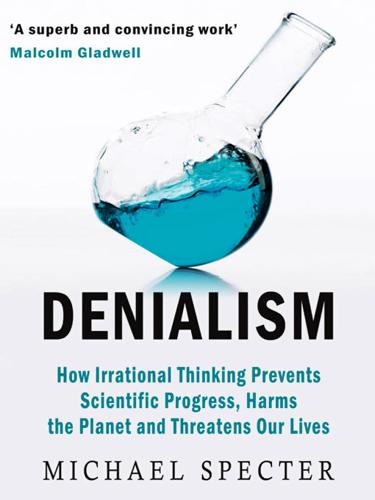
Denialism: How Irrational Thinking Hinders Scientific Progress, Harms the Planet, and Threatens Our Lives
by
Michael Specter
Published 14 Apr 2009
In addition, the National Center for Complementary Medicine, the Harvard School of Public Health, and the Memorial Sloan-Kettering Cancer Center each offer information on vitamins and supplements at http://nccam.nih.gov, http://www.hsph.harvard.edu, and http://www.mskcc.org/mskcc/html/1979.cfm respectively, as of course do many other in stitutions. The two best recent treatments of alternative health have both been written or edited by Ernst Edzard, who is professor of complementary medicine at the universities of Exeter and Plymouth. The first, written with Simon Singh, is Trick or Treatment: The Undeniable Facts about Alternative Medicine (Norton, 2008). Edzard also edited Healing, Hype or Harm? A Critical Analysis of Complementary or Alternative Medicine (Societas, 2008). For the other side of the story, Andrew Weil is the man to see. He is prolific, but one might begin with Healthy Aging: A Lifelong Guide to Your Physical and Spiritual Well-Being (Knopf, 2005).
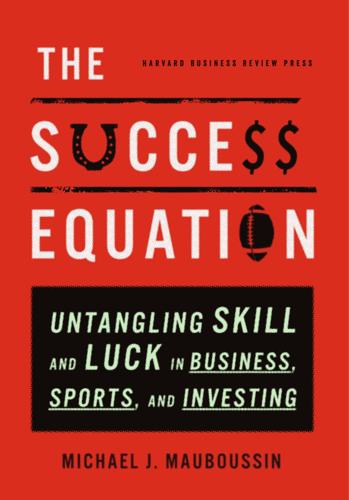
The Success Equation: Untangling Skill and Luck in Business, Sports, and Investing
by
Michael J. Mauboussin
Published 14 Jul 2012
Dealing with quadrant four is far more difficult, and there is a natural and frequently disastrous tendency to apply naively the methods of the first three quadrants to the last. While most of our discussion will dwell on areas where statistics can be helpful, we will also discuss ways to cope with activities in the fourth quadrant. CHAPTER 2 WHY WE'RE SO BAD AT DISTINGUISHING SKILL FROM LUCK AS PART OF A LECTURE that he delivers to the general public, Simon Singh, a British author who writes about science and math, plays a short snippet from Led Zeppelin's famous rock song, “Stairway to Heaven.” Most of the people in the audience are familiar with the tune, and some know the lyrics well enough to sing along. He then plays the same song backward. As you would expect, it sounds like gibberish.
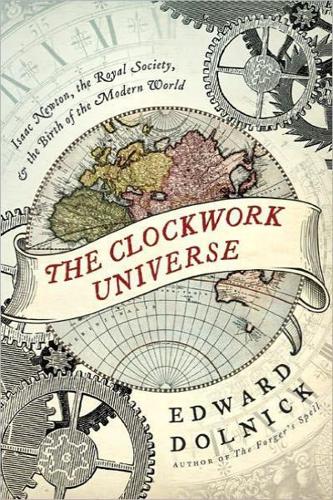
The Clockwork Universe: Saac Newto, Royal Society, and the Birth of the Modern WorldI
by
Edward Dolnick
Published 8 Feb 2011
Jardine writes that the unnamed showman with his arm in the pump was “almost certainly Hooke.” 60 one Arthur Coga: Weld, History of the Royal Society, vol. 1, p. 220. 60 a perfect subject: I owe this insight to Steven Shapin, “The House of Experiment in Seventeenth-Century England,” p. 376. 61 “to be the Author of new things”: Boorstin, The Discoverers, p. 409, quoting Thomas Sprat, History of the Royal Society, (London: 1734), p. 322. 62 “old wood to burn”: Cohen, Revolution in Science, p. 87. 62 “not to discover the new”: Boorstin, The Discoverers, p. 409. 62 In the fourteenth century Oxford: John Barrow, Pi in the Sky (New York: Oxford University Press, 1992), p. 205. 63 “the hallmark of the narrow-minded”: Daston and Park, Wonders and the Order of Nature, p. 61. 63 “For God is certainly called”: Ibid., p. 39. 63 The “lust to find out”: William Eamon, Science and the Secrets of Nature, p. 60. 63 “what the Lord keeps secret”: Ecclesiastes 3:22–23, quoted in Eamon, Science and the Secrets of Nature, p. 60. 64 “If the wisest men”: Westfall, Science and Religion in Seventeenth-Century England, p. 22. 64 How could anyone draw: Shapin, The Scientific Revolution, p. 82. 64 “absorbing, classifying, and preserving”: Allan Chapman, England’s Leonardo: Robert Hooke and the Seventeenth-Century Scientific Revolution, p. 40. 65fn Bacon’s zeal for experimentation: John Aubrey, Brief Lives (Woodbridge, Suffolk: Boydell, 1982), entry for “Francis Bacon.” 65 Nature must be “put to the torture”: Ibid., p. 40. 65 dizzy and temporarily deaf: Jardine, Ingenious Pursuits, p. 56. CHAPTER 11. TO THE BARRICADES! 66 “I swear to you by God’s”: David Berlinski, Infinite Ascent, p. 66. 67 “like torches, that in the lighting”: Eamon, Science and the Secrets of Nature, p. 330. 68 “I’ve known since yesterday”: Simon Singh, Big Bang (New York: Harper, 2004), p. 302. Richard Feynman tells the story in its classic, romantic form in his Feynman Lectures on Physics (Reading, MA: Addison-Wesley, 1963), pp. 3–7, almost as soon as he begins. 68 For decades Hooke argued: Eamon, Science and the Secrets of Nature, p. 347. 68 “Nothing considerable in that kind”: Ibid., p. 347. 68 “Do not throw your pearls”: Paolo Rossi, The Birth of Modern Science, p. 18. 69fn The historian Paolo Rossi: Rossi, The Birth of Modern Science, p. 15. 70 “to improve the knowledge”: Eamon, Science and the Secrets of Nature, p. 348. 70 “not by a glorious pomp”: Ibid., p. 25, quoting Sprat, History of the Royal Society, pp. 62–63. 70 “a close, naked, natural way”: Sprat, History of the Royal Society, p. 113. 71 “All that I mean”: Carey, John Donne, p. 58.
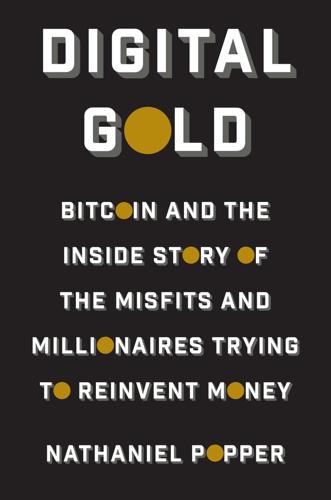
Digital Gold: Bitcoin and the Inside Story of the Misfits and Millionaires Trying to Reinvent Money
by
Nathaniel Popper
Published 18 May 2015
For those looking to learn more about the topics covered in this book there are several wonderful books. On the history of the Cypherpunks, there is Andy Greenberg’s This Machine Kills Secrets: How WikiLeakers, Cypherpunks, and Hacktivists Aim to Free the World’s Information. For the history of cryptography I learned a great deal from Simon Singh’s The Code Book. For those eager to learn more about the evolution of money, Felix Martin’s Money: An Authorized Biography and Jack Weatherford’s The History of Money are wonderful reads, and Nigel Dodd’s The Social Life is thought-provoking. Those looking to go into greater depth can try A History of Money by Glyn Davies.
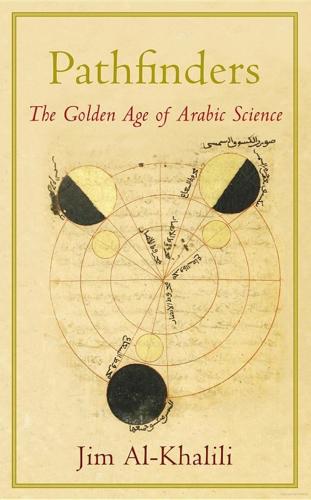
Pathfinders: The Golden Age of Arabic Science
by
Jim Al-Khalili
Published 28 Sep 2010
Peter Adamson, Al-Kindi, Great Medieval Thinkers (Oxford University Press, 2006), p. 4. 3. Socrates did not himself leave any philosophical writings. His ideas reach us only through the writings of his contemporaries and students, most notably Plato. 4. Quoted in Richard Walzer, ‘The Rise of Islamic Philosophy’, Oriens, 3/1 (1950), p. 9. 5. Simon Singh, The Code Book (Fourth Estate, 2000), pp. 14–20. 6. Lynn Thorndike, Arabic Occult Science of the Ninth Century (Kessinger Publishing, 2005), p. 649. 7. Alfred L. Ivry, ‘Al-Kindi and the Mu’tazila: A Philosophical and Political Reevaluation’, Oriens, 25 (1976), p. 82. 8. Adamson, Al-Kindi, p. 5. 9.

Think Like a Rocket Scientist: Simple Strategies You Can Use to Make Giant Leaps in Work and Life
by
Ozan Varol
Published 13 Apr 2020
Squyres, Roving Mars: Spirit, Opportunity, and the Exploration of the Red Planet (New York: Hyperion, 2005), 239–243, 289. 11. Yuval Noah Harari, 21 Lessons for the 21st Century (New York: Spiegel & Grau, 2018). 12. The section on Fermat’s Last Theorem draws on the following sources: Stuart Firestein, Ignorance: How It Drives Science (New York: Oxford University Press, 2012); Simon Singh, Fermat’s Last Theorem: The Story of a Riddle That Confounded the World’s Greatest Minds for 358 Years (London: Fourth Estate, 1997); NOVA, “Solving Fermat: Andrew Wiles,” interview with Andrew Wiles, PBS, October 31, 2000, www.pbs.org/wgbh/nova/proof/wiles.html; Gina Kolata, “At Last, Shout of ‘Eureka!’
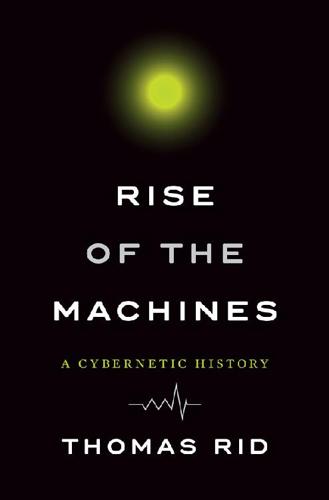
Rise of the Machines: A Cybernetic History
by
Thomas Rid
Published 27 Jun 2016
ANARCHY 1.James Ellis, The Story of Non-secret Encryption (Cheltenham, UK: GCHQ/CESG, 1987), para. 4. 2.Walter Koenig, Final Report on Project C-43: Continuation of Decoding Speech Codes, NDRC contract no. OEMsr-435 (New York: Bell Telephone Laboratories, 1944). 3.James Ellis, The Possibility of Secure Non-Secret Digital Encryption, research report no. 3006 (Cheltenham, UK: GCHQ/CESG, 1970). 4.Quoted in Steven Levy, Crypto (New York: Penguin, 2000), 396. 5.Clifford Cocks, quoted in Simon Singh, The Code Book (London: Fourth Estate, 1999), 285. 6.Ellis, Possibility. 7.“You did more with it than we did,” Ellis once told fellow cryptographer Whitfield Diffie, but he refused to say more. See the last paragraph of Steven Levy’s Crypto. 8.Whitfield Diffie and Martin Hellman, “New Directions in Cryptography,” IEEE Transactions on Information Theory 22, no. 6 (November 1976): 644–54. 9.For an excellent and more detailed description, see Levy, Crypto, 90–124. 10.Martin Gardner, “A New Kind of Cipher That Would Take Millions of Years to Break,” Scientific American 237, no. 2 (August 1977): 120–24. 11.Singh mentions three thousand letters; Levy, seven thousand.
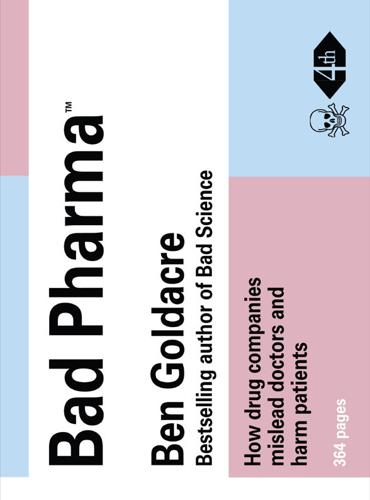
Bad Pharma: How Medicine Is Broken, and How We Can Fix It
by
Ben Goldacre
Published 1 Jan 2012
ACKNOWLEDGEMENTS, FURTHER READING AND A NOTE ON ERRORS I have been taught, corrected, calibrated, cajoled, entertained, encouraged and informed by a very large number of people, including John King, Liz Parratt, Steve Rolles, Mark Pilkington, Shalinee Singh, Alex Lomas, Liam Smeeth, Josie Long, Ian Roberts, Tim Minchin, Ian Sample, Carl Heneghan, Richard Lehman, Dara Ó Briain, Paul Glasziou, Hilda Bastian, Simon Wessely, Cicely Marston, Archie Cochrane, William Lee, Brian Cox, Sreeram Ramagopalan, Hind Khalifeh, Martin McKee, Cory Doctorow, Evan Harris, Muir Gray, Amanda Burls, Rob Manuel, Tobias Sargent, Anna Powell-Smith, Tjeerd van Staa, Robin Ince, Roddy Mansfield, Rami Tzabar, Phil Baker, George Davey-Smith, David Pescovitz, Charlotte Wattebot-O’Brien, Patrick Matthews, Giles Wakely, Claire Gerada, Andy Lewis, Suzie Whitwell, Harry Metcalfe, Gimpy, David Colquhoun, Louise Burton, Simon Singh, Vaughan Bell, Richard Peto, Louise Crow, Julian Peto, Nick Mailer, Rob Aldridge, Milly Marston, Tom Steinberg, Mike Jay, Amber Marks, Reg, Mum, Dad, Josh, Raph, Allie, and Lou. I’m hugely indebted to the late Pat Kavanagh, Rosemary Scoular, Lara Hughes-Young, and especially Sarah Ballard, who is amazing.

Crypto: How the Code Rebels Beat the Government Saving Privacy in the Digital Age
by
Steven Levy
Published 15 Jan 2002
Cylink Corporation and Caro-Kann Corporation are public. 311 expiration date In fact, two of the Stanford patents, covering Diffie-Hellman key exchange and knapsacks (and arguably the concept of public key itself) had expired in 1997. The MIT patent covering RSA expired September 20, 2000. Epilogue: The Open Secret Some of the information here first appeared in Wired, April 1999, “The Open Secret,” which was the first complete account of the Communications-Electronics Security Group (CESG) advances. (Simon Singh’s account in The Code Book was to follow.) Ellis’s paper “The Story of Non-Secret Encryption” lays the outline for the discoveries and, like the other CESG papers, is available on its Web site. Some of Clifford Cocks’s remarks here were drawn from “The Invention of Non-Secret Encryption,” a talk given at Bletchley Park on June 20, 1998, at a “History of Cryptography” seminar hosted by the British Society for the History of Mathematics.
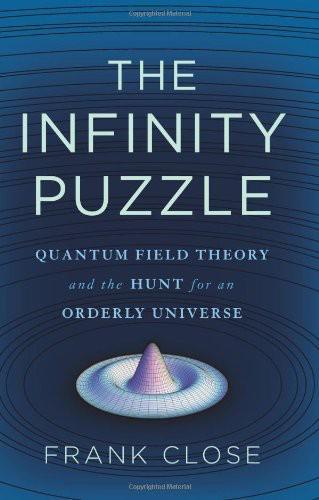
The Infinity Puzzle
by
Frank Close
Published 29 Nov 2011
This is a statement of the perception when the problem remained unsolved, exemplified by the startled reactions when the news of ’t Hooft’s work became known (see page 12). However, remarkable though ’t Hooft and Veltman’s work was, the technical achievement cannot really be compared to that of Wiles, who had to build whole new lines of mathematics, and alone. See Simon Singh’s book Fermat’s Last Theorem for the story of Wiles’s triumph. 3. M. Veltman, Nobel Lecture, http://nobelprize.org/nobel_prizes/physics /laureates/1999/veltman-lecture.html, 384. 4. M. Veltman, Facts and Mysteries in Elementary Particle Physics, 299. 5. Veltman, Nobel Lecture, 384. 6. Quotes are from Veltman’s Nobel Lecture in 1999.

Physics of the Future: How Science Will Shape Human Destiny and Our Daily Lives by the Year 2100
by
Michio Kaku
Published 15 Mar 2011
Michael Salamon, NASA’s Beyond Einstein program Adam Savage, host of MythBusters Peter Schwartz, futurist, cofounder of Global Business Network, author of The Long View Michael Shermer, founder of the Skeptics Society and Skeptic magazine Donna Shirley, former manager, NASA Mars Exploration Program Seth Shostak, SETI Institute Neil Shubin, professor of organismal biology and anatomy, University of Chicago, author of Your Inner Fish Paul Shuch, executive director emeritus, SETI League Peter Singer, author of Wired for War, Brookings Institute Simon Singh, author of Big Bang Gary Small, coauthor of iBrain Paul Spudis, Planetary Geology Program of the NASA Office of Space Science, Solar System Division Steven Squyres, professor of astronomy, Cornell University Paul Steinhardt, professor of physics, Princeton University, coauthor of Endless Universe Gregory Stock, UCLA, author of Redesigning Humans Richard Stone, The Last Great Impact on Earth, Discover Magazine Brian Sullivan, formerly with the Hayden Planetarium Leonard Susskind, professor of physics, Stanford University Daniel Tammet, autistic savant, author of Born on a Blue Day Geoffrey Taylor, physicist, University of Melbourne the late Ted Taylor, designer of U.S. nuclear warheads Max Tegmark, physicist, MIT Alvin Toffler, author of The Third Wave Patrick Tucker, World Future Society Admiral Stansfield M.
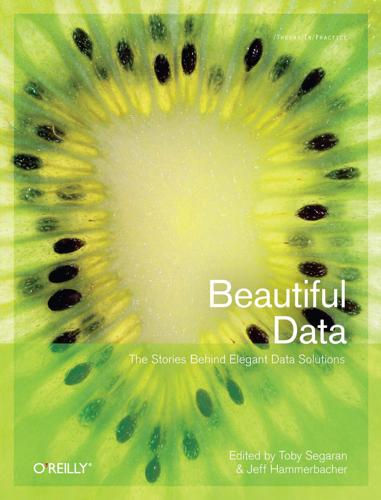
Beautiful Data: The Stories Behind Elegant Data Solutions
by
Toby Segaran
and
Jeff Hammerbacher
Published 1 Jul 2009
.' >>> decode_shift2(shift2(msg)) 'general kenobi years ago you served my father in the clone wars now he begs you to help him in his struggle against the empire' Still way too easy. Let’s move on to a general substitution cipher, in which any letter can be substituted for any other. Now we can no longer enumerate the possibilities, because there are 26! keys (about 4 × 1026), rather than just 26. The Code Book by Simon Singh (Anchor) offers five strategies (and we’ll mention a sixth) for breaking ciphers: 1. Letter unigram frequencies. Match common letters in the message to common letters in English (like “e”) and uncommon to uncommon (like “z”). 2. Double letter analysis. A double in the coded message is still double in the decoded message.
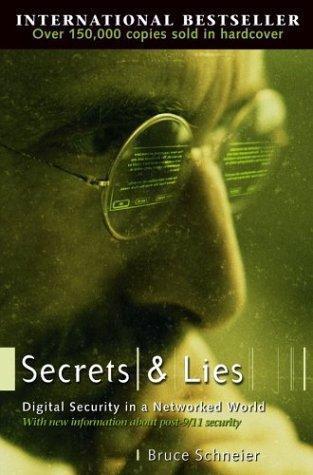
Secrets and Lies: Digital Security in a Networked World
by
Bruce Schneier
Published 1 Jan 2000
And I would like to thank Michael Angelo, Ken Ayer, Steve Bass, David Dyer-Bennet, Ed Bennett, Russell Brand, Karen Cooper, David Cowan, Walt Curtis, Dorothy Denning, Carl Ellison, Andrew Fernandez, Gordon Force, Amy Forsyth, Dean Gahlon, Drew Gross, Gregory Guerin, Peter Gutmann, Mark Hardy, Dave Ihnat, Chris Johnston, James Jorasch, Arjen Lenstra, Stuart McClure, Gary McGraw, Doug Merrill, Jeff Moss, Simona Nass, Artimage Nelson, Peter Neumann, Andrew Odlyzko, Doug Price, James Riordan, Bernard Roussely, Tom Rowley, Avi Rubin, Ryan Russell, Adam Shostack, Simon Singh, Jim Wallner, and Elizabeth Zwicky, who read and commented on all or part of the book in its almost-final form. These people did a lot to make the book complete, accurate, and interesting. Any remaining omissions, lingering errors, or residual prolixity are solely my own fault. Open source pundit Eric Raymond has said: “Given enough eyeballs, all bugs are shallow.”
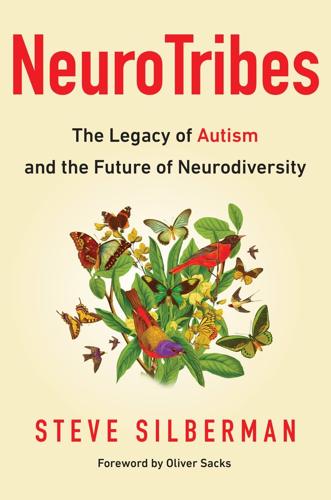
NeuroTribes: The Legacy of Autism and the Future of Neurodiversity
by
Steve Silberman
Published 24 Aug 2015
coming out in midlife about her diagnosis: “Daryl Hannah Breaks Her Silence about Her Autism Struggle,” Rebecca Macatee. E! Online, Sept. 27, 2013. http://www.eonline.com/news/464173/daryl-hannah-breaks-her-silence-on-autism-struggle musing about his autistic traits: “Interview with Richard Borcherds,” Simon Singh. Guardian, Aug. 28, 1998. “On a very drawn-out scale, I think I’m on the spectrum”: “Jerry Seinfeld to Brian Williams: ‘I Think I’m on the Spectrum.’” NBC News, Nov. 6, 2014. After a storm of media attention, Seinfeld would eventually walk those comments back, saying that he “related” to a dramatized account of the lives of people on the spectrum. http://www.nbcnews.com/nightly-news/jerry-seinfeld-brian-williams-i-think-im-spectrum-n242941 CHAPTER 2.
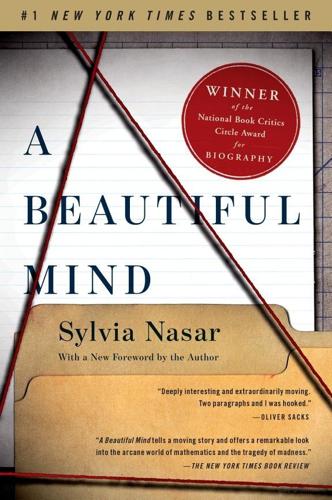
A Beautiful Mind
by
Sylvia Nasar
Published 11 Jun 1998
Mann, The Wall Street Journal “A triumph of intellectual biography.” — Robert Boynton, Newsday “Might be compared to a Rembrandt portrait, filled with somber shadows and radiant light effects… simply a beautiful book.” — Marcia Bartusiak, The Boston Globe “A remarkable look into the arcane world of mathematics and the tragedy of madness.” — Simon Singh, The New York Times Book Review “A narrative of compelling power.” — John Allen Paulos, Los Angeles Times “A wonderfully absorbing puzzle.” — Claire Douglas, Washington Post Book World “A poetical love and coming-of-age story.” — Ted Anton, Chicago Tribune “The stuff of classic tragedy
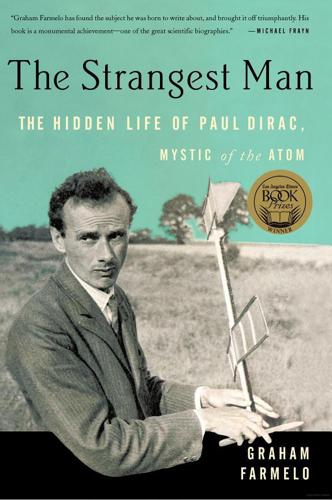
The Strangest Man: The Hidden Life of Paul Dirac, Mystic of the Atom
by
Graham Farmelo
Published 24 Aug 2009
Others who have been extremely helpful in responding to my enquiries: Sir Michael Atiyah, Tom Baldwin, John Barnes, Herman Batelaan, Steve Batterson, John Bendall, Giovanna Blackett, Margaret Booth (née Hartree), Gustav Born, Olaf Breidbach, Andrew Brown, Nicholas Capaldi, David Cassidy, Brian Cathcart, Martin Clark, Paul Clark, Chris Cockcroft, Thea Cockcroft, Flurin Condrau, Beverley Cook, Peter Cooper, Tam Dalyell, Dick Dalitz, Olivier Darrigol, Richard Davies, Stanley Deser, David Edgerton, John Ellis, Joyce Farmelo, Michael Frayn, Igor Gamow, Joshua Goldman, Jeffrey Goldstone, Jeremy Gray, Karl Hall, Richard Hartree, Peter Harvey, Steve Henderson, Chris Hicks, John Holt, Jeff Hughes, Lane Hughston, Bob Jaffe, Edgar Jenkins, Allan Jones, Bob Ketchum, Anne Kox, Charles Kuper, Peter Lamarque, Willis Lamb, Dominique Lambert, Ellen and Leon Lederman, Sabine Lee, John Maddox, Philip Mannheim, Robin Marshall, Dennis McCormick, Arthur I. Miller, Andrew Nahum, Michael Noakes, Mary Jo Nye, Susan Oakes, James Overduin, Bob Parkinson, John Partington, Sir Roger Penrose, Trevor Powell, Roger Philips, Chris Redmond, Tony Scarr, Robert Schulmann, Bernard Shultz, Simon Singh, John Skorupski, Ulrica Söderlind, Alistair Sponsel, Henry King Stanford, Simon Stevens, George Sudashan, Colleen Taylor-Sen, Laura Thorne, Claire Tomalin, Martin Veltman, Andrew Warwick, John Watson, Russell Webb, Nina Wedderburn, John Wheeler, the late David Whitehead, Oliver Whitehead, Frank Wilczek, Michael Worboys, Nigel Wrench, Sir Denys Wilkinson and Abe Yoffe.
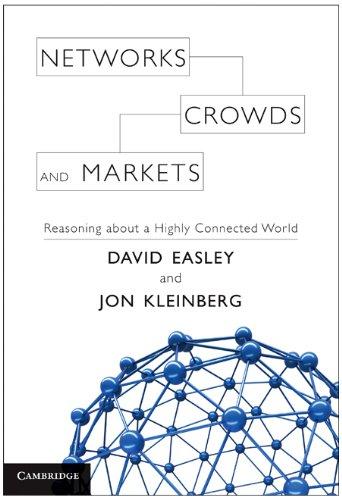
Networks, Crowds, and Markets: Reasoning About a Highly Connected World
by
David Easley
and
Jon Kleinberg
Published 15 Nov 2010
American Journal of Political Science, 53(1):122–138, 2009. [364] Özgür Sim¸sek and David Jensen. Navigating networks by using homophily and degree. Proc. Natl. Acad. Sci. USA, 105(35):12758–12762, September 2008. [365] Herbert Simon. On a class of skew distribution functions. Biometrika, 42:425–440, 1955. [366] Simon Singh. Erdos-Bacon numbers. Daily Telegraph, April 2002. [367] John Skvoretz and David Willer. Exclusion and power: A test of four theories of power in exchange networks. American Sociological Review, 58:801–818, 1993. [368] Brian Skyrms. The Stag Hunt and Evolution of Social Structure. Cambridge University Press, 2003